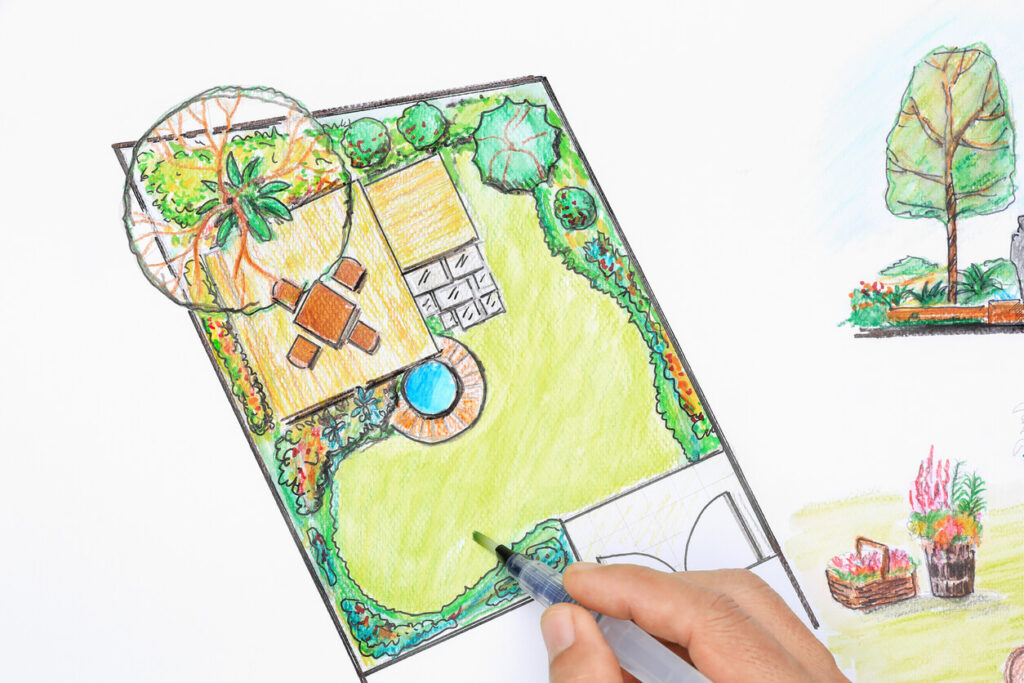Citrus offers year-round greenery, fragrant blossoms, and delicious fruit …. what’s not to like? And even if you have a small area to work with or you are dealing with poor soil conditions, you can still grow citrus successfully in containers!
1. Learn the temperature and light requirements for your citrus plant.
Citrus trees require 8 hours of sunlight per day. A sunny and wind-free area is best. Citrus trees can also be frost sensitive and should be covered or moved indoors in cold weather. Mandarin and Kumquat trees are the cold-hardiest, followed by grapefruits and oranges. Lime and lemon trees are most sensitive to frost. You will need to bring your citrus tree(s) indoors if your winter nighttime temperatures drop below 35 degrees F to keep them protected from frost. An optimal indoor growing environment also can include additional grow lights (use LED lights, not incandescent). You can also cover your citrus tree with frost cloth for further protection when temps get too close to frosty.
2. Select a citrus variety that is suitable for containers.
Containers can be used for almost any citrus tree, however, large trees like grapefruit and lemons will quickly outgrow the containers. You can grow dwarf rootstock varieties or Kumquat varieties like Improved Meyer lemon, Bearss Lime, and Kumquat. These trees are naturally smaller and will last longer in containers. While dwarf trees can produce equal quality and size fruit, they will yield between 50-60% less fruit. It’s also worth noting that smaller trees are more difficult to plant, but will have less transplant shock.
3. Make sure you use the right container
To allow roots to grow, the pot must be larger than the nursery pot your tree is purchased in. Use a large (28 inches or larger) durable pot. Half wine barrels are a good option. Ceramic pots that are not porous work well. Consider how the pot will be moved if you live in an area with cold winters. To ensure drainage, the pot should have multiple drain holes that run around the circumference. If necessary, drill additional holes.
4. Your tree will thrive if you have the right soil!
A light-weight potting mix with organic ingredients like perlite and vermiculite is best. All organic matter soils will quickly decompose and become dense, which can reduce the root’s ability to aerate. Avoid soils that are laden with chemical-wetting agents, as these retain too much moisture. The roots will not get the oxygen they require from native soil if it is too compacted.
5. Plant trees at the right depth.
Take the plant out of the nursery pot. Plant it at the original nursery pot soil level with the graft union. This is the small bump or scar that was created when the fruit variety was grafted onto the rootstock. It should be at least 4-8 inches above the soil line. To allow for irrigation, backfill the pot leaving about 1-2 inches at its top. If the soil settles, water the pot and add more soil. The roots should not be visible within the soil. You also should not have soil around the tree trunk.
6. Water your citrus plant correctly.
Citrus roots prefer moist, but not too wet conditions. Citrus roots need different watering requirements when placed in containers. Roots will dry faster. You can use a moisture meter to determine when water is needed. You may notice that the soil top feels dry. To test this, place the meter deeper below roots. You should water thoroughly until the water starts to drain from the drain holes. Containers can dry very quickly in the hottest months of the year. You may need to water them only a few times per week. You will need to water less in cooler temperatures. Pay attention to your foliage. Roots that become wilted after watering can indicate that they have been left to dry out. You should water more often. If your leaves are yellowed or curled after watering, you may need to water less frequently.
7. Citrus trees are heavy feeders, so they require regular fertilizer.
Remember that the tree’s roots are dependent on you for nutrients and water. If you don’t provide what they need, it won’t be able to go searching for other sources. Frequent watering is more important for citrus in containers. Slow-release granular citrus fertilizers are great for citrus in containers. They contain trace minerals such as iron, zinc and manganese. The type of fertilizer you use and the age of your tree will determine the amount that you apply. Follow the label instructions to find out the exact amounts. You should fertilize citrus in containers once a month during the growing season. A lack of fertilizer or over-watering can lead to yellow leaves.
8. Pruning your tree should be done with care.
All suckers below the graft union must be pruned. The suckers eat energy from the tree, but they don’t produce fruit. Prune dead branches. Pruning citrus can be done for balance, size, and shape but is not required. After the risk of freezing has passed, prune in spring before new growth emerges. Pruning exposed bark can cause sunburnt. Lower branches should not be pruned. To cover bark exposed, use water-based latex paint.





